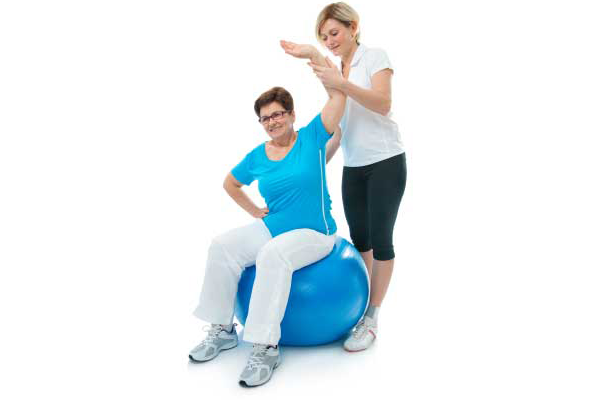It is apparent that with physical strength decreases with age, similarly the eyes also show an age-related decline in performance after the 60s and beyond. The most common age related eye changes are presbyopia and cataract. There are some more serious conditions that affect the quality of life in old agelike glaucoma, diabetic retinopathy and macular degeneration. You can now get some facts about changes in eyesight with age and height.
You must have seen many people getting specs after a certain age. But, even at very early stage many teenagers and children are seen with spectacles. But, it is very unnaturally to have low vision at a very early stage. The natural process with which body changes its forms and strength is also applicable with regards to the vision. The eyes function becomes different in each decade starting from 60 years of our age. Such that at 60s we have a certain eye function, at 70’s it will be different. Again in 80s and 90s difference will be found out.
Age-related vision changes
- This is a condition that one notice around the age of 40 in which one fails to focus on close objects and reading in normal position would not be possible. This is a normal condition caused by hardening of the lens in the eye.Presbyopia worsens with age which may require reading glasses, multifocal eye glasses.
- Cataracts are also common age related change among seniors. It develops by the age of 65-70. The modern cataract surgery is perfectly safe and 100% effective. Cataracts must be removed before it becomes very hard.
Macular degeneration
It is the leading cause of blindness in senior people.Age-related macular degeneration (AMD) is a breakdown of the eye’s macula which is a small area in the retina. The macula is the part of the retina which is a sensitive tissue that lines the back of the eye. It is responsible for the central vision.
Glaucoma
Glaucoma is a group of diseases that causes damage to the eye’s optic nerve and becomes worse over time. It builds up pressure in the eye leading to damage of the optic nerve which is connected to the brain. If the pressure on optic nerve continues this condition of glaucoma can lead to permanent loss of vision. There are no symptoms to it; it is diagnosed when the loss of vision starts.
Diabetic retinopathy
Thia is a result of prolonged diabetes that is left untreated for long. All diabetic patients have some degree of diabetic retinopathy but there are few who have advanced vision threatening retinopathy.
Effects of age on other eye structures
Besides presbyopia and cataracts, more subtle changes in the vision and eye structure take place with age… These changes are:–
Reduced pupil size
Muscles that control the pupil size and reaction to light lose some strength with age. This causes the pupil to become smaller and less responsive to normal lights. This is the reason people after the age of 60 may be dazzled with bright light when coming out of dim light rooms or movie theatres. Glasses with photochromic lenses and anti-reflective glasses can help to reduce this problem.
Dry eyes
Eyes in old age become dry as the body produces less tears. Dry eyes cause burning stinging or some other eye discomfort. Artificial tear drops are helpful to keep the eyes moist and give relief from the symptoms of dry eyes.
Loss of peripheral vision
There is a normal loss of peripheral vision as age advances. It gradually decreases the size of visual field. With the loss of visual field there is risk of accidents while driving.
Decreased colour vision
The sensitivity of the cells in the retina that are responsible for colour vision reduces with age. This causes the colours to look less bright and contrast between certain colours is less noted.
Vitreous detachment
Is a harmless situation in which spots and floaters are seen? This can be a signal to a serious disease called detached retina which can cause blindness.
High-altitude retinal haemorrhage (HARH)
There have been many cases of retinal haemorrhage in mountaineers, trekkers and in people exposed to high altitudes. Physicians recommend the preliminary treatment of HARH with oxygen, steroids, diuretics and immediate removal of the patient from the heights. High altitude retinopathy is both a significant component and indicator for progressive altitude illness
Contact lenses in mountaineering
Contact lenses may be used successfully at high altitude, but its use during trekking or mountaineering becomes difficult. Contact lenses are not recommended for overnight use. Removing contact lenses at night has some problems in mountaineering and trekking. Following hygiene instructions for contact lens in expeditions is not easy. If the lens is left in the tent in a solution, the lens and solution may freeze solid by morning. People using contact lens during expeditions should carry eye drops lens and lens wetting solution.
Activities playing role in eye vision
These days’ maximum people are adopting the spectacles in order to see well. It is due to their lifestyles changes and the activities which they perform. For example, did you ever see the labors working in factories or in construction project? Do they have specs? The answer will be no in majority of cases. The reason is their occupation. Their occupation is physical activity which does not involve more of eye work. Thus, their vision remains unchanged. Rather maximum of them do not have to get specs for long years.
Vision of people with screen exposure
Today, the literate people with a degree work in front of computer throughout the day. Most of the offices have such openings. Only the candidates with computer literacy are considered in the interview panel. Even in banks, the officers and clerks are dependent totally on computer to deal with the monetary transaction. As a result, most of the employees are affected with poor vision. Having specs is a very common phenomenon for many of them. If you have a look at the eye sight of 100 people with such profession, 70% of them will be having spectacles.
Effect on height on vision
There is a connection with eye sight problem with the height. Some of the people have an opinion that eye sight problem increases with height. But other says height has mothering to do with the eyesight problem. But, the height effects the shape of eyeball in many cases.





